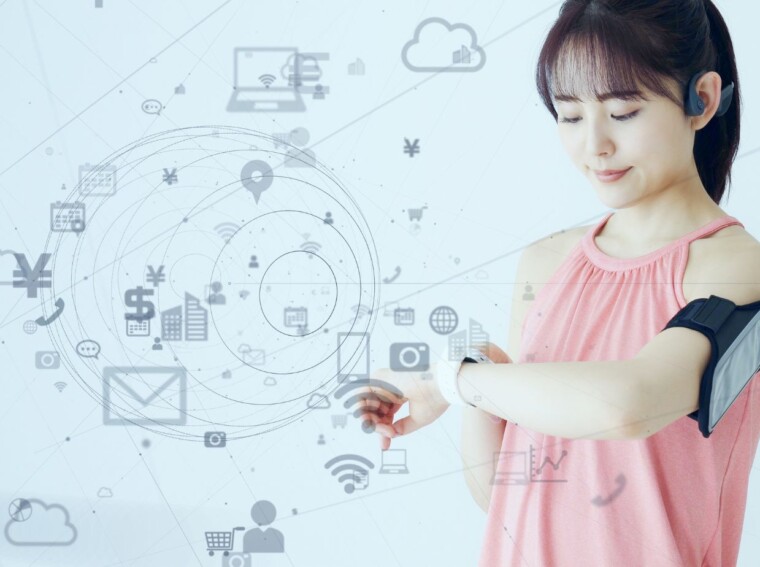When we think of mobile computing today, we tend to consider laptops, smartphones, and tablets. Systems like these have come a long way, but they’re still far from the perfect solution to computing on the move. Instead, it’s wearable hardware that could illustrate the ultimate end point of mobile platforms, once our implementation catches up to system potential.
Taking a look back at the journey traveled and the technology increasingly feasible today, we want to explore the possibilities in the next generation of wearable computing. Why do these solutions hold so much potential, and how could they represent the ultimate option in personal computing and data safety?
The First Steps
The first generations of home computers were necessarily desktop-based. Weight, power requirements, and limited battery life played important parts in this equation, where it wasn’t feasible to carry early generations of equipment on the move. The first laptops drove computing into the mobile age, but a five-inch screen on a 24.5 lb system that still required an AC outlet was a crude first step.
Over the generations, as miniaturization, LCD screens, and battery technology evolved, true mobile laptops reached the market. These eventually became viable to the average consumer and then even the preferred choice by many. The reason was simple: being able to carry your computer, programs, and data with you on the go was incredibly useful in many professional and personal pursuits.
As small and light as laptops would become, however, they’re still limited. They still need to be carried around in special cases, and they’re still not a technology you can take everywhere. The next step in solutions appeared through an even more portable and ubiquitous platform – the smartphone.
Mobile Setting a Standard
Smartphones quickly proved a revolution in communication, as they overshadowed the capabilities of their forebearers.

Unlike non-smart mobile phones, this newer variant was essentially a smaller laptop, only without the larger screen or tactile controls. The most limited of these were still many thousands of times more powerful than the first PCs, and over time they became increasingly useful as tools.
The issue that stood and still stands in the way of mobiles being seen as truly viable work platforms for the masses is input and peripherals. Without a keyboard, a mouse, and a larger screen, delicate work becomes inconvenient and inefficient. The rising age of hardware docks that transform mobiles into more capable portable computers can solve this problem, but it’s also a place where we can now find a superior option – wearable devices.
Wearable Possibilities
When we talk about wearable computers, we’re talking mostly about the potential of smartwatches, and the options appearing soon in smart rings. Since these systems are physically attached to us in a way that smartphones aren’t, they illustrate the highest levels of mobility in tech. A platform like a smartwatch or a smart ring combined with a hardware dock would provide the most convenient possible mobile platform, and it’s not as farfetched as you might think.
Bluetooth and wireless connectivity with these devices means they can easily connect with keyboard, mouse, and monitor setups. A dock being powered would mean battery charge wouldn’t be an issue for a placed watch, and a ring might even be able to be powered through direct contact with a computer mouse. Biometrics built into these systems could also prevent data theft and allow streamlined logging in. The technology to accomplish these feats already exists, meaning the only potential concern would be performance.
The hardware specifications of the Samsung Galaxy Watch6 include 2 GB of RAM, 16 GB of storage, and a dual-core 1.4 GHz CPU. This isn’t impressive compared to a modern desktop or smartphone, but it is around the capabilities of an iPhone 5. Given a streamlined operating system and low-demand uses, this would make docked smartwatches viable for many modern uses.

This could start in entertainment, with betting site access to browsing and gaming. The power of a docked smartwatch could allow players to browse a casino site, play games like FlyX and Massive Gold, and even deposit safely using inbuilt biometrics. The same experience available on desktops and mobiles would be possible on a docked watch. This access could also apply to watching movies, sending emails, writing documents, and managing databases. Smart rings are still a few generations off this point, but decreasing transistor size could eventually bridge the gap.
With much of the base technology already allowing smartwatches the potential to achieve PC, laptop, and smartphone tasks, it’s just a matter of time before somebody takes the first steps into implementation. The possibilities of this kind of access are very real; we simply need standardization and investment to lead the way. In an increasingly digital-focussed work world, the advantages are too great to ignore forever, and this unconventional form of mobile computing access is just a matter of time.

